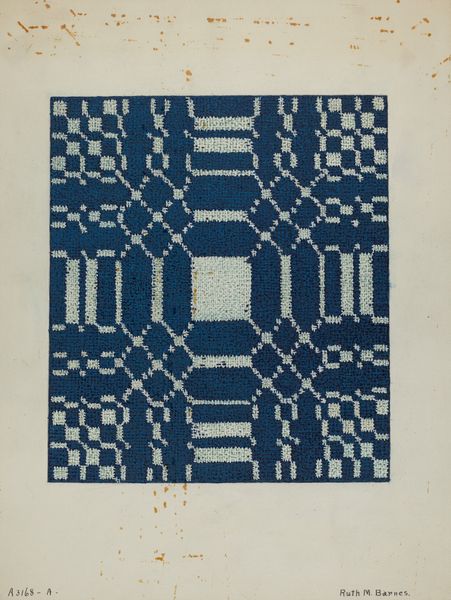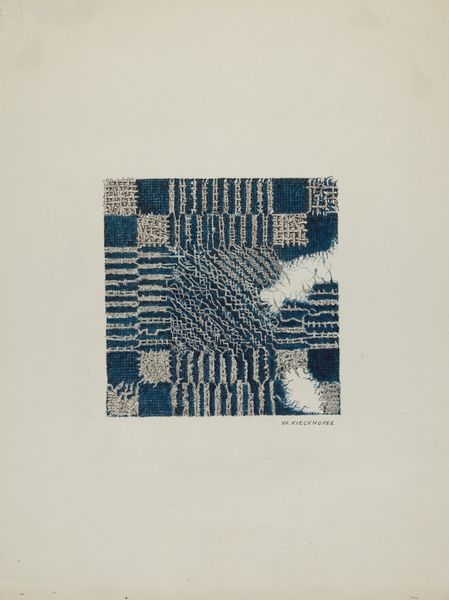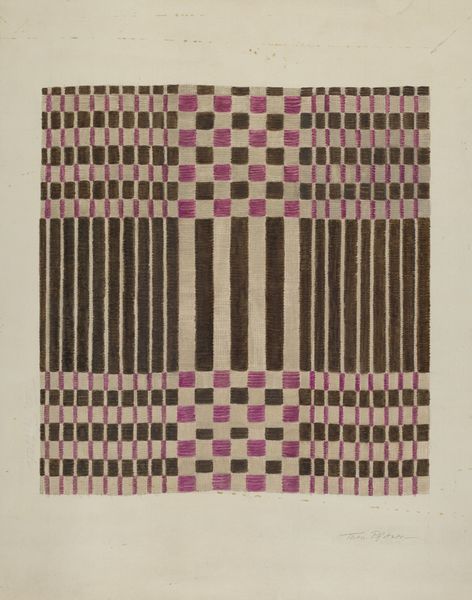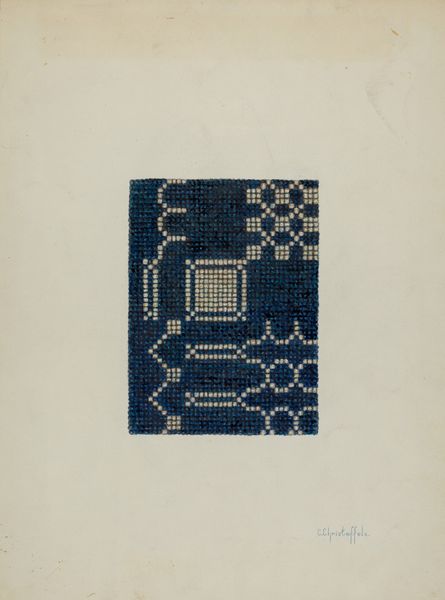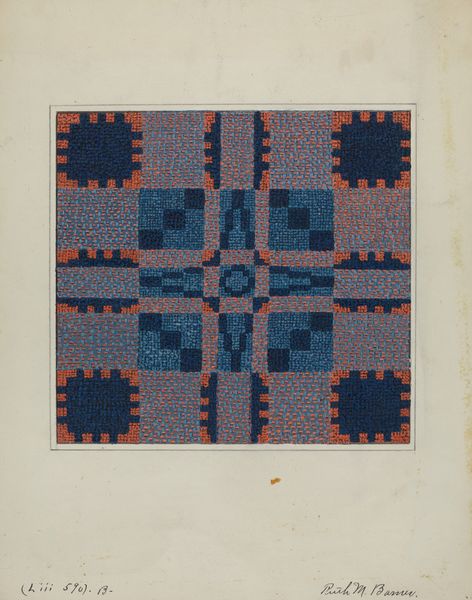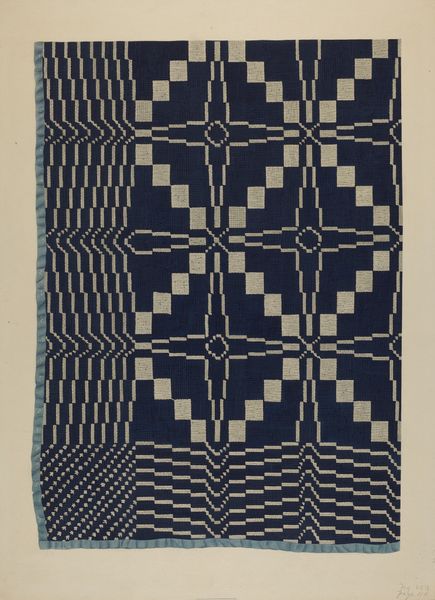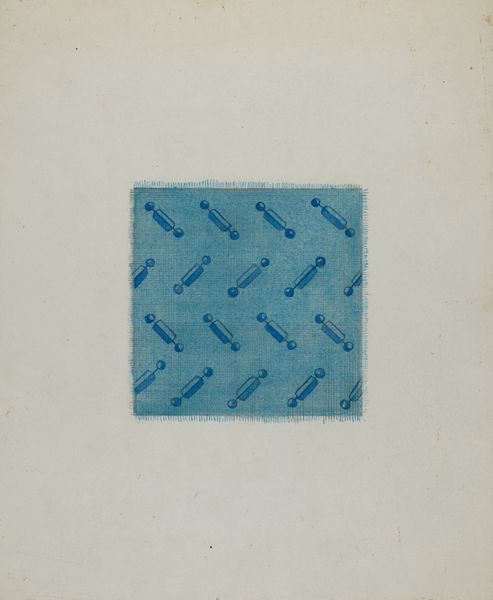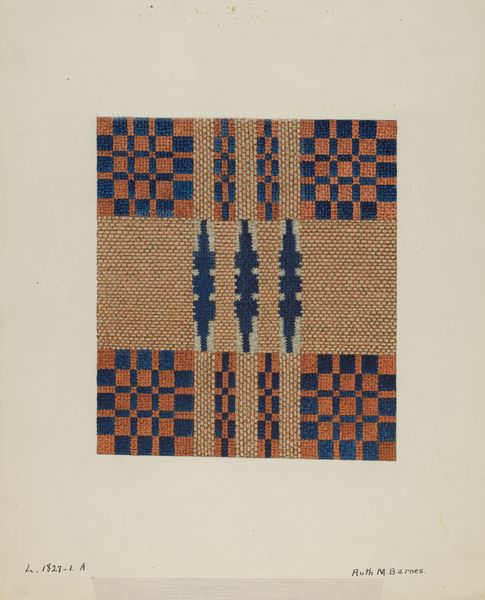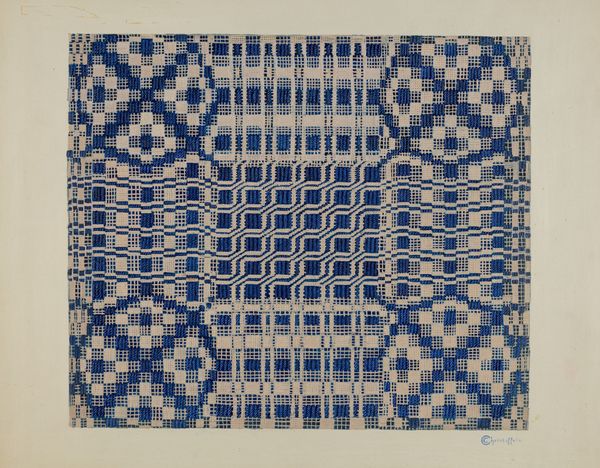
drawing, fibre-art, textile
#
drawing
#
fibre-art
#
pattern
#
textile
#
geometric
#
abstraction
Dimensions: overall: 35.7 x 26.7 cm (14 1/16 x 10 1/2 in.) Original IAD Object: 60" wide; 72" long
Copyright: National Gallery of Art: CC0 1.0
Curator: Looking at this geometric abstraction immediately evokes a sense of domesticity, almost a folk-art charm. It reminds me of quilts or woven placemats. What do you think? Editor: We're looking at "Coverlet (Section of)" by Ruth M. Barnes, dating from around 1940. It’s primarily a textile piece, using fibre-art techniques. Knowing the title suggests this piece, or at least, this section, has ties to personal stories, potentially domestic labour, craft traditions and class politics. Curator: Yes, the name lends a certain lived experience. Notice the limited palette—deep blue and white—creates a structured, almost rigid design despite the soft texture of the weaving. The repetition of geometric patterns feels comforting and perhaps subversive, a quiet revolt. Editor: Exactly. Consider the socio-economic context: women, often with limited access to formal art training, have historically expressed themselves through textiles. Coverlets and quilts can become coded narratives reflecting their experiences and perspectives. Did these textiles challenge conventional art hierarchies by creating beautiful, useful objects in traditionally marginalized spheres? Curator: Absolutely! And what about the viewer's experience? The square format and concentric patterns draw the eye inward. Is it creating a visual representation of confinement or intimacy, perhaps echoing societal expectations? What happens to women placed into defined "boxes"? Editor: That’s a potent observation. On a basic, socio-political level, textile production like this has historically held immense economic power for women in their households, although obviously limited. Understanding the art world, particularly its gendered aspects, invites broader reflections on representation and cultural values. What we find acceptable in the white cube. Curator: This piece, simple in its geometry and accessible in its function, opens up those important questions. Editor: And reminds us that what we may immediately consider "craft" holds rich socio-political and artistic dimensions.
Comments
No comments
Be the first to comment and join the conversation on the ultimate creative platform.
